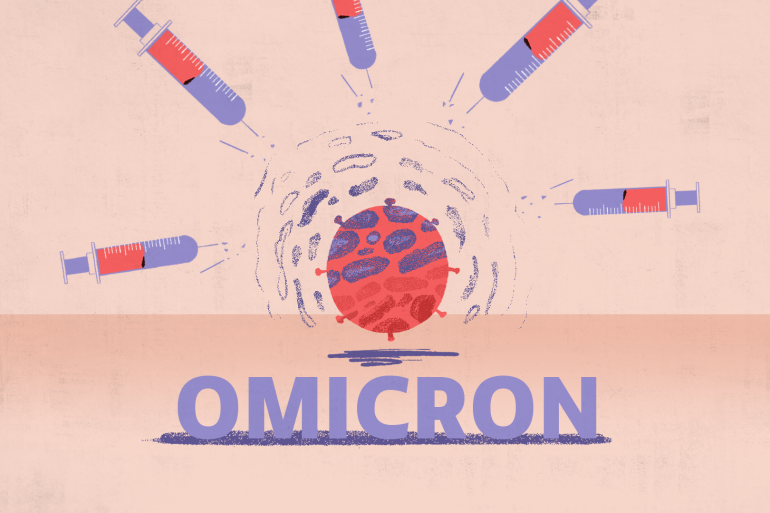Over the past few weeks, there has been a surge of coronavirus cases around the world. As of Dec. 21, it was estimated that the new Omicron variant accounted for more than 80 per cent of total cases in Montreal. The variant was first detected in South Africa on Nov. 24, and on Nov. 26, it was designated as a variant of concern by the World Health Organization (WHO).
What are the symptoms of Omicron?
Common symptoms include body and muscle aches, headaches, sore throat, runny nose, fever, and fatigue. These symptoms are similar to those of the common cold for some people. Like previous variants, symptoms such as fever and nasal congestion are common, but the loss of taste and smell are less prevalent among Omicron patients than they are among the older variants. In most cases, especially if a patient has no underlying health conditions, the symptoms are milder than previous variants, making it hard to track cases as infected people are more likely to either ignore the symptoms or assume it is the common cold. However, there has still been a concerning rise in hospitalizations in Canada since Omicron took off, with the unvaccinated making up the majority of intensive care unit admissions.
What are the mutations present in the Omicron variant?
Compared to the original SARS-CoV2-strain, the Omicron variant has 50 additional mutations. Thirty-two of these mutations are found on the virus’s spike proteins. The spike proteins allow the virus to enter the body and spread. Fifteen of these mutations are found in the receptor binding domain of the spike protein. These mutations make it easier for the virus to bind to the ACE2 receptors, infect cells and replicate—making it a faster spreading variant. A study conducted by researchers in Hong Kong corroborated this finding, showing that the Omicron variant replicated 70 times more quickly in the upper airways compared to the Delta variant. However, additional studies show that Omicron fails to replicate in the lungs because it cannot interact with TMPRSS2—a protein found on the surface of the lungs. This is good because infection of the lungs leads to more severe disease.
Dr. Brian Ward is a professor in McGill’s Faculty of Medicine and Health Sciences whose research involves monitoring the evolution and development of vaccines.
“Most of us working in the field believe that massive exposure due to the Omicron variant will trigger the transition from ‘pandemic’ to ‘endemic’ phases of the outbreak.” Ward wrote in an email to The McGill Tribune.
A Danish study recently showed that people who received the booster shot were 56 per cent less likely to be infected than those who received two doses.
How effective are vaccines against micron? Will routine boosters be necessary?
“Pandemic viruses tend to evolve to lower virulence, bad when they first appear and then progressive declines in virulence,” Ward wrote. “In some cases, this is driven by adaptation of the virus to a population with high levels of immunity.”
It is important to note that vaccines protect the body against viruses by making the body produce not only antibodies, but T-cells that recognize the virus. When a COVID-19 vaccine is administered, the antibodies and T-cells recognize the spike protein and will bind to the spike protein and “neutralize” the virus.
Compared to the antibodies, T-cells are slower to form. However, they offer longer-lasting protection and prevent severe infection.
The mutations in the Omicron spike protein allow it to evade the antibodies generated from the vaccine but not the T-cells. This means that the antibodies are no longer able to recognize and bind to the spike proteins of new variants. However, the more antibodies you have, the greater the chance the antibodies will recognize the virus. The antibodies from people who received the booster were 25 times more likely to bind to the virus than those that did not receive the booster.
One question of particular concern is whether boosters would need to be administered yearly. Jorg Fritz, a professor in the Department of Microbiology and Immunology, speculates that this may become the case.
“Given the current high viral circulation rate and low vaccination rate overall worldwide it is very likely that we will need an annual booster shot for the years ahead,” Fritz wrote in an email to The McGill Tribune. “The booster shots might need ‘adaptation’ to include antigenicity of novel circulating viruses (e.g. Omicron, or newly arising variants that might appear and transmit highly).”






